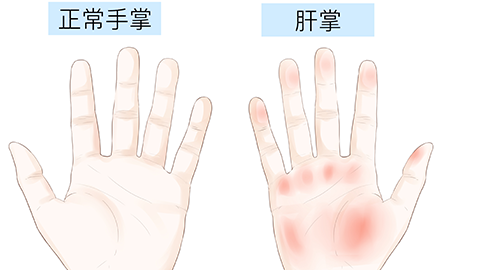What are liver palms?
Generally, palmar erythema (liver palms) may be associated with physiological changes during puberty, hormonal imbalance, chronic hepatitis, cirrhosis, hepatic pulmonary syndrome, and other causes. It is recommended to seek timely medical consultation to identify the underlying cause and receive symptomatic treatment under the guidance of a qualified physician. Detailed analysis is as follows:

1. Physiological Changes During Puberty
Due to the demands of growth and development during puberty, significant hormonal changes occur in the body, including increased secretion of estrogen, which may lead to the development of liver palms. It is recommended to maintain proper rest, avoid excessive fatigue and emotional fluctuations, and thus maintain stable hormone levels.
2. Hormonal Imbalance
Imbalances in hormone regulation can cause fluctuations in hormone levels, leading to capillary dilation and subsequently causing liver palms. Maintaining a healthy lifestyle is recommended to help stabilize hormone levels.
3. Chronic Hepatitis
Chronic hepatitis is usually caused by factors such as viruses and alcohol consumption. Hepatitis viruses or harmful substances damage liver cells, resulting in elevated estrogen levels in the blood, which stimulates capillary congestion and dilation, leading to liver palms. This is often accompanied by symptoms such as fatigue, decreased appetite, and nausea. Treatment typically follows medical advice using medications such as amoxicillin capsules, cefixime dispersible tablets, and compound glycyrrhizin tablets.
4. Cirrhosis
Cirrhosis develops as a progression of chronic hepatitis. Cirrhosis can severely impair liver function and reduce the liver's ability to metabolize and inactivate estrogen, resulting in liver palms. Symptoms typically include jaundice, splenomegaly, and esophageal and gastric varices. Treatment should follow medical advice and may include medications such as entecavir dispersible tablets, diammonium glycyrrhizinate capsules, and Fuzheng Huayu capsules.
5. Hepatic Pulmonary Syndrome
Hepatic pulmonary syndrome is commonly associated with acute or chronic liver disease. Liver disease can promote vasodilation in the lungs, leading to abnormal hormone metabolism in the body, which can result in liver palms. Symptoms may also include dyspnea, cyanosis, and clubbing of the fingers. Treatment under a physician's guidance may involve medications such as salbutamol aerosol, ipratropium bromide aerosol, and furosemide injection.
It is recommended to maintain an optimistic mindset, avoid excessive excitement, tension, anxiety, and engage in appropriate physical activity, which can help enhance physical fitness and maintain overall health.








